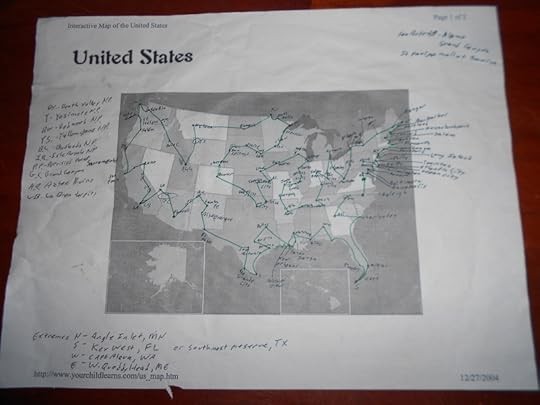Peter Jenkins’ “A Walk Across America” is more than just a travelogue; it’s a profound exploration of the American spirit in the early 1970s. Setting out from New York and heading towards New Orleans, Jenkins, accompanied by his loyal dog Cooper, embarks on a transformative journey that reveals as much about himself as it does about the diverse tapestry of America. This book, initially conceived as a photographic essay for National Geographic, evolves into a deeply personal narrative of self-discovery, encounters with unforgettable characters, and a sometimes harsh, often heartwarming, look at a nation undergoing significant social change.
Embarking on the Unexpected: The Genesis of a Walk
The journey itself was almost accidental. Disenchanted with the prevailing narratives about America, Jenkins felt compelled to experience the country firsthand. Armed with youthful idealism and a desire to understand the heart of America, he started his walk. This wasn’t a meticulously planned expedition, but rather an organic unfolding, driven by curiosity and a willingness to embrace the unknown. Initially intending to capture the visual aspects of his journey for National Geographic, Jenkins soon found himself immersed in the stories of the people he met, the landscapes he traversed, and the internal shifts he experienced.
[ ](Peter Jenkins’ ambitious walking route across America, highlighting his coast-to-coast journey and exploration of diverse states.)
Jenkins’ initial plan, as depicted in a map he conceived years before his actual walk, envisioned a more extensive route across all contiguous 48 states. While “A Walk Across America” chronicles his journey from the East Coast to New Orleans, this map represents the broader ambition and spirit of exploration that fueled his adventure. Although the realized walk was geographically narrower than this initial grand design, it remained a powerful testament to his determination to experience the breadth of American life.
Encounters and Revelations: People and Places Along the Way
The heart of “A Walk Across America” lies in the people Jenkins meets. From the generous hospitality of strangers in the South to the suspicion and prejudice he sometimes encounters as a “yankee hippie,” each interaction paints a vivid picture of America’s social landscape. He portrays a country grappling with its identity, still deeply divided by racial tensions and cultural differences, yet also brimming with kindness, resilience, and a strong sense of community in unexpected corners.
One memorable episode involves Jenkins’ experience in Robinsville, North Carolina, where he is unjustly accused of being a drug dealer and faces hostility from the entire town. This stark portrayal of small-town paranoia contrasts sharply with the warmth he experiences elsewhere, illustrating the complex and sometimes contradictory nature of American society. Conversely, his time spent working at a sawmill and living within a Black community reveals both the stark realities of poverty and segregation and the unexpected bonds of human connection that transcend societal divisions. The sawmill workers, initially wary of the outsider, eventually come to respect his work ethic, while his Black neighbors offer him a different perspective on American life, marked by both hardship and resilience.
[ ](Peter Jenkins’ journey and interactions with diverse communities, reminiscent of the theme of connection and unexpected friendships.)
The nickname “Al,” bestowed upon Jenkins by his coworkers at the sawmill – short for “Albino” – reflects a moment of cultural misunderstanding, yet also hints at the burgeoning acceptance and camaraderie he begins to experience. This episode, much like Paul Simon’s song “You Can Call Me Al,” underscores the theme of unexpected connections and finding common ground across seemingly disparate backgrounds.
Spiritual and Personal Transformation: Finding God and Love
Jenkins’ journey is not only geographical but also deeply spiritual. Initially an atheist, he experiences a profound religious awakening during a revival in Alabama. This conversion is not presented as a sudden, dramatic event but rather as a gradual process of realization, nurtured by his encounters with faith and genuine human kindness along his walk. His spiritual transformation adds another layer to the narrative, highlighting the personal and internal dimensions of his journey.
Towards the end of his walk, Jenkins meets his future wife, Barbara Pennell. This encounter marks another significant turning point, representing not only romantic love but also a sense of companionship and shared purpose as he continues his travels westward in subsequent books. The arrival of Barbara signifies a new phase in his journey, suggesting that human connection and love are as essential to his exploration as the physical act of walking.
A Critical Look at Jenkins’ Narrative Style
While “A Walk Across America” is a compelling and insightful read, it is important to acknowledge some criticisms regarding Jenkins’ writing style. As an inexperienced writer at the time, his prose can occasionally be uneven, marked by clichés and mixed metaphors. However, these stylistic imperfections can also be viewed as part of the book’s charm, reflecting the raw and authentic voice of a young man on a journey of self-discovery. His sometimes-clumsy attempts at descriptive writing, as humorously highlighted in the original review excerpt regarding his description of his future wife, reveal his genuine, if somewhat unrefined, perspective. These moments of stylistic awkwardness do not detract from the overall impact of the narrative but rather contribute to its unique and personal character.
Enduring Relevance: A Journey for Every Generation
Despite being set in the 1970s, “A Walk Across America” remains remarkably relevant today. Jenkins’ quest to understand America, to connect with its people, and to find his place within its vast landscape resonates with contemporary readers. In a world increasingly polarized and fragmented, his journey serves as a reminder of the importance of empathy, open-mindedness, and the value of stepping outside one’s comfort zone to truly understand the world and oneself. The book encourages readers to consider their own “walks across America,” whether literal or metaphorical, in pursuit of personal growth and a deeper understanding of the human experience. It is a testament to the enduring power of personal journeys and the timeless appeal of seeking connection and meaning in a complex world.

